Page 1 |
Page 2 |
Page 3
1. Magical Places
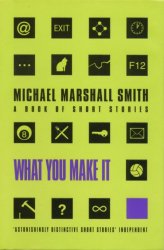
The twist at the end of Michael Marshall Smith's short story 'What You Make It' (comes as much from the narrative voice's defense of Wonder World, a Disney style theme park in which most of the story takes place, as it does from the revelation that the main character, Ricky, has been the victim of a set-up which leads to his gruesome death.
Ricky is a hitman hired to kill, by their potential heirs, elderly residents of a retirement "homeland" located inside Wonder World. To do so he abducts runaway children whom he gets to pose as friends of his victims' grandchildren before he rapes and kills them. Thoroughly cynical about the theme park (and virtually everything else in the world) Ricky describes it as a "big con" consisting of "crap based around a bunch of cartoons and some asshole's idea of the perfect world" (1999, 376).
Ricky's cynicism is juxtaposed with the idealism of Marty the theme park's Gateman whom Ricky has earlier assessed, with characteristic generosity of spirit, as a "fucking loser" (373). Marty believes in the magic of Wonder World; unlike Ricky, he does not read for realism but understands that the park is a place of fantasy, a fictional world, and that fantasy is an essential component in understanding and coping with reality. Ricky's view of the world is dualistic: things are either True (factual) or False (fictional).
In place of such a duality, the literary critic Wolfgang Iser has proposed a triad of Real/Fictive/Imaginary (1993: 1-21), where the third category is created by the interaction of the first two. For Iser, "the act of fictionalising" is "an act of transgression":
Whatever realities are transposed into the [fictional] text, they turn into signs for something else. Thus they are made to outstrip their original determinacy. As this transformation of the determinate into the indeterminate is brought about by the fictionalising act, the basic quality of this act begins to emerge: the act of fictionalising is the crossing of boundaries. (3)
By being "transposed" into the fantastic text of Wonder World, by crossing the border patrolled by Marty the Gateman – a liminal figure who, while fully human himself, operates a ticket dispenser which like cartoon objects often do, comes to life and misbehaves, involving him, and the visitors purchasing tickets, in Wonder World's fiction before the visitors fully enter the "text" – Ricky himself becomes the subject to a fictionalising act: he becomes part of a performance by the robotic characters. This performance is observed by Nicola, his most recent abductee, and Grandma, an android used by the owners of the theme park as bait to lure Ricky. Familiar with the generic conventions of the cartoons that supply the source material for Wonder World, Nicola reads Ricky's capture by the robots as another incidence where a "well meaning villain . . . end[s] up joining the right side":
They laughed as they watched the characters play. Nicola had thought the man she'd come with had been a bad man, but he couldn't have been as bad as all that. Bud and Slap the Happy Rats where holding one of his hands, and they looked like they were dancing with him, leading him to the wagon. They looked like they liked him a lot. The man's mouth opened and shut very wide as he danced, and Nicola thought he was probably laughing. She would be in his position. They all looked like they were having such fun. (383)
Actually, Ricky is about to be raped by the cartoon characters who have been altered in a way resonant with his own brutal worldview:
These toons were just for Ricky . . . They were stuffed into parodies of uniforms, torn at the seams and stained with bad things. Bud had a lazy, damaged eye, and was holding a big wooden truncheon in an unreassuring way. Slap had a sore on his upper lip, and kept running a long blue tongue over it to collect the juice [ . . . ] From five yards away he could smell the rats' odour, the gust of sweat and stickiness and decay, and for a moment catch an echo of all the screams and death rattles they'd heard. (392)
The "toons" that are "just for Ricky" have been made "realistic" in much the same way as superhero comic book characters were in the 1980s by writers Alan Moore and Frank Miller who, Moore particularly, introduced "real world logic" to the genre. (More recently, Mark Millar and Anthony Williams have taken a similar approach to cartoon characters in their comic book THE UNFUNNIES, which starts from the premise that the characters are actual living, biological beings, and that cartoons are live action films rather than animation. THE UNFUNNIES closely resembles the pornographic comic books known as "Tijuana Bibles" of the 1950s, which featured well known cartoon and comic strip characters such as Betty Boop or Donald Duck performing sexual acts.)
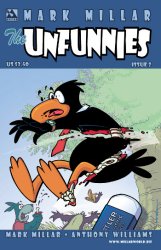
Moore and Miller's approach towards the superhero genre has frequently described as "revisionist", the implication being that they have gone back over the fictive history of superheroes and shown what really happened, or rather what really would, if superheroes were real. Of course, superheroes, like cartoon characters, already were real, as part of the Imaginary of their readers. As Iser writes, "the transgressive function of the fictionalising act links it to the imaginary", gives the imaginary context, focus:
In our ordinary experience, the imaginary tends to manifest itself in somewhat diffuse manner . . . The imaginary may suddenly flash before our mind's eye, almost as an arbitrary apparition, only to disappear again or to dissolve into quite another form. (3)
For Iser, the "fictionalising act is a guiding act" wherein the "[r]eproduced reality is made to point to a 'reality' beyond itself, while the imaginary is lured into form" with the result that "extratextual reality merges into the imaginary and the imaginary merges into reality" (3). The "revisionist" superheroes may be more "realistic" than their source material, but they are no more real, and no less fictional. What they may be is more relevant for their times, their cultural context: Moore has said that WATCHMEN was the result of a "political bad mood" (Millidge, 2003, 20) he experienced living in Britain under the Thatcher government of the 1980s and has called his subsequent work in the superhero genre – particularly the series 1963 (1987), which is an homage to the work produced by legendary comic book artist Jack Kirby in the titular year – as an "atonement" for it. Similarly, the "toons" Ricky encounters are appropriate for him, are, in fact, created by his incursion into the fiction of Wonder World.
The reason the defence of Wonder Land in 'What You Make It' is so surprising is because, as the ENCYCLOPEDIA OF SCIENCE FICTION states, within the genre "the typical theme park story has the expected manipulations of a game, turned into the nightmare manipulations of Paranoia" (1286). While it is possible to identify a tradition of "paranoid" science fiction stretching back to the nineteenth century, the advent of the mass media in the 1950s energised the sub-genre. In this new environment, reality becomes, as William Burroughs writes in NOVA EXPRESS (1964, 1986) "a biologic film", a "stale movie" (48, 93), something artificial and subject to remote "control". Perhaps the best known examples of the science fiction "theme park story" come from author and screenwriter Michael Crichton. WESTWORLD (1973, novelised by Crichton in 1974) and JURASSIC PARK (1990, adapted to film in 1994) portray the theme park as acts of hubris, Promethean follies. Both WESTWORLD and JURASSIC PARK involve the creation of artificial life: androids in the former, genetically engineered dinosaurs in the latter. This artificial life inevitably turns, like Frankenstein's monster, against its creator.
Nigel Clark, drawing on Jean Baudrillard's theories of simulation, writes that when the dinosaurs "rebel" in JURASSIC PARK, we see "the overreaching of a particular aesthetic, or mode of simulation." ('Panic Ecology', 77). He describes the theme park as "a place where the entire environment is designed for visual consumption, a place where things are more beautiful, more perfect, more enchanting than any ordinary locale" and states that "[t]he artifice of the theme park, like that of the cinema or television, is about making absent objects or events appear, about bringing things into presence in their best possible light". (78) Visibility is of paramount importance; it is what is promised by the producers, and what is demanded by the visitors. Therefore, as Clark notes, "[w]hen things go wrong at Jurassic Park, it is not only the regulatory mechanisms of techno-science which break down, but also the structures and formulas of theme park visuality". (78) By escaping, the dinosaurs "break the golden rule by refusing to make [themselves] visible". Returning to "nature", the dinosaurs are now free to stalk their prey, the human visitors who have also "broken the rules" by trying to find them.
2. Hidden Places
The desire for total visualisation is an expression of the "modern drive to 'master' the natural world" (70) as is the genetic engineering of Jurassic Park's dinosaurs. Such an "application of technical rationality to [nature's] most infinitesimal and intimate recesses" (70) is potentially catastrophic. Clark compares Baudrillard's theory of simulation to Ulrich Beck's concept of the modern Western culture as a "risk society" where technology has created the potential for "undelimitable accidents". For Beck, the "minute scale of human intervention into bio-physical processes [ . . . ] coupled with the grand scale of economic activity, raises the possibility of releases of extremely dangerous matter which defies deactivation or recontainment". (Clark, 79)
This is precisely what occurs in Marshall Smith's story 'Hell Hath Enlarged Herself'. The story is narrated by a scientist who has been involved in the creation, using nanotechnology, of what he calls a "thalidomide of the soul" (1999, 74). The narrator and his fellow scientists have accidentally released an epidemic of biomachines into the world which are designed to "rewire" the brain causing those infected to see the spirits of the dead, specifically those spirits that "can turn people into psychotics who riot, murder or end their lives through the hatred or guilt [the spirits] bring with them" (74-5).
The epidemic is a result of the narrator's research partner Philip's attempt to find a way to modify his own brain to allow him to contact – and make visible – his dead lover, Rebecca. As with the creators of Jurassic Park or Westworld, Philip's hubris is punished and he is murdered by an angry, infected mob. The result of the epidemic is, as the title suggests, an enlargement of the field of visualisation, an "overexposure" of the dead.
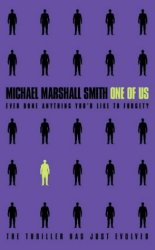
While the drive towards visibility and exposure may be fundamental to Western culture, the concept of concealment, as applied in the "editing" of reality involved urban planning, is equally important. Hap Thompson, the narrator of Marshall Smith's novel ONE OF US (1998), lives in Griffith Park an "up-scale residential" enclave which is not simply gated but fortified and patrolled by heavily armed guards (48). Although Griffith Park's name is typical of such "exclusive" enclaves in America (and the shopping malls which often share similar architecture), in this case it is the literal, or rather the simulated, truth: the area has retained the name of the public space it is built upon. Moreover, a simulation of the original site is projected onto the enclave's walls:
The exterior of [the] wall was painted with high resolution LED, and the whole surface wired into a central computer . . . This, along with stored images of how the park used to be before the development, was seamlessly displayed on the videowall – creating the illusion that nothing was there [ . . . ] Unless you walked right up and punched it –which the guards were there to prevent you from doing – the illusion was perfect. It was like nothing had changed. (48-9)
Inside Griffith Park "the same idea was deployed in reverse, with views of Burbank, Glendale and Hollywood constantly updated right up to the sky". (48) The residents experience a live simulation of the outside world, which is, presumably, preferable to the real thing.
The strength of ONE OF US as a piece of speculative (and satirical) fiction comes in large part from its setting in Los Angeles which is, as Douglas Coupland, has observed an "entirely manufactured city" (163, original emphasis). Hap tells us that the decision to develop Griffith Park came after "plate analysis revealed that, come the next quake, Brentwood was going to end up in Belgium" (48). Brentwood is one of Los Angeles most exclusive districts, although as Coupland has observed (in the essay 'Brentford Notebook' which he describes as "an attempt to make visible the previously invisible" (3)) the area:
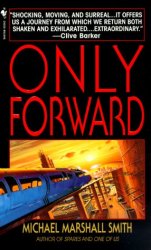
. . . does not exist. Not technically. It is a hilly canyoned, Los Angeles suburb – a ZIP code: 90049. Letters sent to Brentwood will be returned to sender. Roughly 250 letters a day end up in the small Californian town of Brentwood, ZIP code 94513.
Despite this lack of official civic autonomy (the district was incorporated into Los Angeles as a result of a pact to receive water from the city's Owens aqueduct (147-8)), Brentwood nevertheless has a particular character which Coupland describes as "the impression of being a 1970s future utopia, one with a secret at its core, perhaps a pleasant secret and perhaps an unpleasant secret, but a secret that nonetheless remains fiercely protected". (148). As such, Brentwood recalls the setting of another classic of "paranoid" science fiction, Ira Levin's THE STEPFORD WIVES (1972, adapted to film, 1974), an affluent suburb the secret of which is that the female population have been mind controlled through the application of techniques one of their husbands has acquired as a Disney employee.
Coupland does not approve of Brentwood. He sees it as an unhealthy fantasy constructed around a no longer relevant "1950s narrative of what 'life' is supposed to be" (182). Brentwood is a retreat from the complications and contradictions of (post)modern culture. In this it resembles two other exclusive communities: Stable in Marshall Smith's novel ONLY FORWARD (1994), and the "master-planned community" of Celebration, built in Florida by the Disney corporation in the mid 1990s.
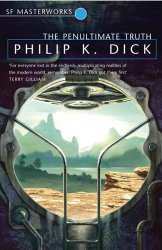
Stable is one of many themed "Neighbourhoods" in the City, a vast and lawless urban sprawl in a post-national near future. The population of Stable, with the exception of the government, believe that a nuclear war has transformed the world outside into a radioactive desert, a simulation of which is projected onto the windows of the Neighbourhood's walls, much like the live simulation broadcast to the residents of Griffith Park. Stable is a "pocket universe", an area separate from a larger external reality of which its residents are unaware. A similar situation occurs in Philip K. Dick's THE PENULTIMATE TRUTH (1964) in which the majority of the world's population lives underground having been convinced by a post-war global government, who exploit them as slave labour, that the surface is uninhabitable due to nuclear fallout. The difference in ONLY FORWARD, however, is that the deceived population lives comfortably in pleasant surroundings which closely resemble present day Western suburbia. Indeed, the narrator Stark, who breaks into Stable (a capital offence there), finds it "actually quite nice". The overwhelming feeling the Neighbourhood engenders in him is one of nostalgia: he describes it as being "like a time capsule, a living museum of life" (60).
This description could apply equally to Celebration as represented by Andrew Ross, whose CELEBRATION CHRONICLES (2000) documents the year he spent living there. Ross quotes from Disney's advertising campaign – which he describes as reading like "Ray Bradbury but without all the stuff that makes your hair stiffen" (18):
There once was a place where neighbours greeted neighbours in the quiet of summer twilight.
Remember that place? Perhaps from your childhood. Or maybe just from stories. (18)
The classic annunciation of storytelling is "Once upon a time"; significantly, Disney's advertising emphasises place instead. Celebration is a place that imitates a (mythical) time; like Stable it is less a utopia than a euchronia, that is, a place constructed around the notion of a better time. In Stable, this time is the period before the emergence of the City; in Celebration it is, as in Brentwood, a "time of innocence" (18) before the 1960s.

